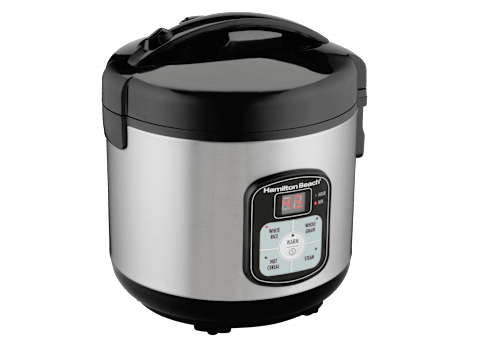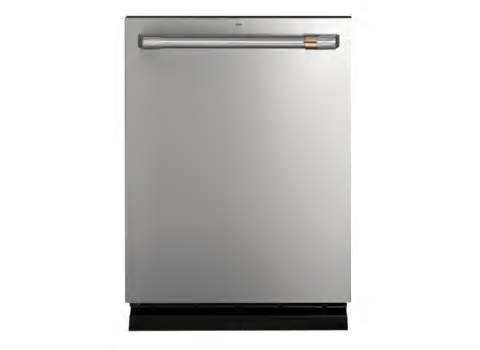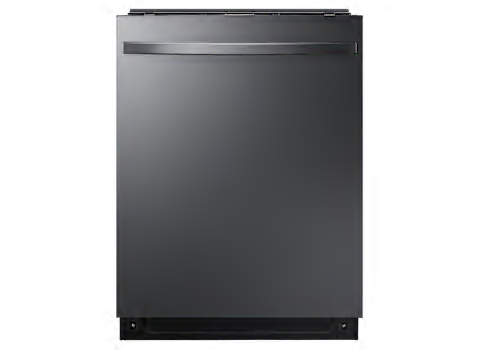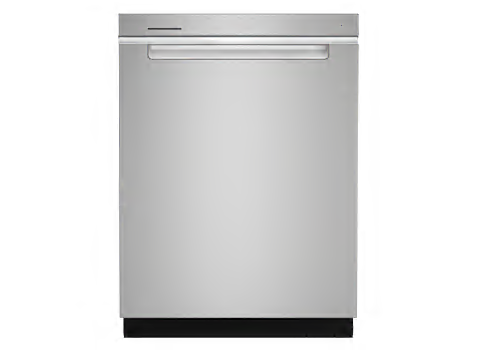Save More—and Waste Less—in the Kitchen
Smart moves, like organizing your fridge and giving your appliances extra TLC, can add up to $3,200 in savings

By Janet Siroto
Your kitchen is one room in your home that provides prime opportunities for saving—and going—green. Taking proper care of large appliances like refrigerators, ranges, and dishwashers helps them run more efficiently and last longer, which can translate into energy and water savings. Lifestyle changes, like eating less meat and growing your own herbs, can also help you keep more in your wallet. And now is a great time to upgrade to more energy-efficient and water-saving products because the money-saving tax credits from the Inflation Reduction Act of 2022 kick in this year.
In fact, adopting the ideas and habits listed here can save you up to $3,200 in just one year.
More good news: Many of these thrifty strategies don’t cost a thing or take much effort. Read on for the simple steps to help you save in the kitchen—and live more sustainably in the process. And click on the links below to learn about more ways to save in almost every room of your house.
How to Save More at Home
Save More—and Waste Less—in the Bathroom
Save More—and Waste Less—in the Laundry Room
Save More—and Waste Less—All Around the House
Save More—and Waste Less—in Your Yard and Garden
Conserve Energy in Two Easy Ways
By shifting your habits slightly, you can save both power and money in the kitchen. Try these tips:
Use the microwave instead of the oven when possible. It draws up to 80 percent less energy. Plus, there’s no preheating required, and it won’t heat up your kitchen on a hot day. Or use a toaster oven, which could use up to half the energy of a full-sized oven to cook the same meal.
Always leave a lever faucet in the cold position when using small amounts of water. Otherwise, you are triggering water to be heated on reserve when it might not be needed.
Eat Less Meat and Save Over $900 a Year
Ever wonder how much you could save if you stopped eating meat for a year? It could cut your grocery bill by a third, or almost a cool thousand bucks, according to a 2021 Oxford University study citing 2017 data. Plus, you would lower your carbon footprint.
Not ready to go fully meat-free? Eating more veggies and less meat or poultry—a flexitarian diet—can also help lower your food spending by 14 percent, or about $380 a year.
Be aware that meatless alternatives can cost more. At Walmart, we found ground beef recently for $4.78 a pound, Gardein plant-based "ground beef" cost $5.72 a pound, while the Impossible Foods version was $7.95 per pound. But try cooking with tofu ($2.02 per pound) and you’ll actually save. For inspiration, put the phrase "meatless Monday" into your search engine, and pick some recipes that catch your eye.
Eat More Rice
By replacing potatoes with rice three times a week, a family of four would be $197.81 richer by year’s end. Just add a stir-fry, curry, beans, or any protein to round out your meal.
Here’s a good, inexpensive rice cooker to make meal prep easier.
Hamilton Beach Cooker and Steamer 37519

Cultivate a Mini-Garden
Buying fresh herbs (around $2 a bunch) and microgreens (about $4) weekly can really add up. But you can shrink your grocery bill by nurturing them from seed on a sunny windowsill using space-saving kits ($15 and up online).
Organize Your Fridge to Save Food—and Up to $1,500 a Year
The average family of four loses $1,500 in uneaten food each year, according to the Environmental Protection Agency. And just think of the water, fertilizer, energy, and other resources that went into producing those groceries. Here’s how and where to store food in your refrigerator to do a better job of using up what you buy.
Store Produce Properly
Anything that might wilt goes in the high-humidity fridge drawer; most fruits, peppers, and items that could rot go in the low-humidity drawer to extend their life.
Wash Fruit Correctly
That means washing just before eating for fruits such as cherries, berries, and grapes; otherwise, they can get moldy.

Illustration: Simone Massoni
Separate the Smart Way
Store apples, avocados, bananas, pears, and stone fruits separately. They emit ethylene gas as they ripen, making other nearby produce ripen more quickly and even spoil.
Label Leftovers
Note what they are and the date, then stack them (ideally in clear containers). If three or four days pass and they haven’t been eaten, pop them into the freezer until you need them. Reader Sara Streeter of Montana designated one shelf in her fridge for leftovers a few years ago and says it has cut her family’s food waste dramatically. One look at the shelf tells her if her family’s cooking is getting too far ahead of their eating. If that happens, she can send something to the freezer or take a night off from the stove to whittle down the leftovers.
Freeze Fruits and Veggies Before They Spoil
Store them in made-for-freezer packaging, such as plastic zip-top bags, and squeeze out as much air as possible. Then add frozen produce to smoothies and stews.
Don’t Trust the Door for Dairy
The compartment inside the door is the warmest spot in the fridge. Even if it has a shelf to cradle a carton, stowing milk there could lead to it spoiling sooner.
Go Low for Meat
The bottom shelf of the refrigerator is the chilliest, perfect for keeping meat, poultry, and seafood fresh.
Don’t Sweat the Sell-by Dates
With the exception of infant formula, date stamps on food are not required by federal law, nor do they reflect food safety. If a food’s use-by date has passed, it still should be safe to eat if it has been handled properly, unless its smell, flavor, or texture seems off (a sign of spoilage). So that bag of salad past its best-by date may still be fit to eat.
Rev Up Efficiency on Ranges and Refrigerators, and Save at Least $22 a Year
Your range and refrigerator are kitchen workhorses. If yours need replacing, consider going with new, energy-efficient models. Energy Star-certified fridges, for example, are about 9 percent more efficient than those that meet the minimum standard and can save you over $260 during a 12-year lifetime.
Here’s how to use your appliances more efficiently.
Do a Gasket Check on Your Fridge
Take a dollar bill and close the refrigerator door on it, half in, half out, to check the seal; repeat at various spots. If it pulls out easily, you may want to replace the gaskets to make sure your fridge stays cool.
Set Your Refrigerator Fresh Food Compartment at 37° F
This will save energy and help keep food fresh as long as possible. Set your freezer at 0° F to keep foods thoroughly frozen.
Defrost Manual-Defrost Fridges and Freezers Regularly
When frost builds up past ¼ inch, the unit becomes less efficient.
Check the Flame on Your Range’s Gas Burners
The color blue is a good sign, but yellow means the fuel is burning inefficiently and you may need an adjustment.
When Cooking, Don’t Open the Oven Door
Instead, look through the glass to check on your dish. Opening the door lets heat escape, forcing the oven to fire up again to compensate.
Avoid Double-Washing Your Dishes
Uh-oh . . . you pushed the Start button on a dishwasher full of already clean pots and plates. Again. That’s why "clean/ dirty" magnets ($3 and up at Amazon and other retailers) were invented. These indicate cleaning status and can help you avoid wasting energy, water, and detergent.
Make Appliances Last Longer
Your refrigerator, range, and dishwasher keep your kitchen humming along—but they’re expensive to repair or replace. Care for them the right way (and if you need a new one, pick a reliable, efficient model).
Range
• Clean up cooktop spills ASAP. Once they dry and harden, they can clog gas burners and might require harsh, possibly damaging scrubbing to remove from a smooth cooktop. Wipe up with paper towels and follow up with a soapy sponge as needed on gas burners. Clean electric coils with a damp cloth, and smooth cooktops with liquid cooktop cleaner and paper towels or a ceramic cooktop cleaning pad.
• Put away the foil. Do you like to line your oven bottom and racks with foil, for easier cleanup? Don’t, says Ron Shimek, president of Mr. Appliance, one of the Neighborly home services companies. It can interfere with functioning and even melt in your oven.
• Clean your oven, too. De-gunk your oven regularly to get rid of grease and drips and keep it working well.
• Baby your range’s control panel. Wipe it clean with a damp, lint-free cloth and dish soap, but don’t get it sopping wet. Water could seep into the circuitry and damage it.
Refrigerator
• Clean the coils. On the underside or rear of your fridge, the condenser coils tend to accumulate dust, dirt, grease, and other gunk, lowering efficiency. Vacuum them with a soft brush attachment at least twice a year.
• Don’t pile items on top of your refrigerator. As tempting as it may be to use it as bonus storage space, objects on top may interfere with the appliance’s ability to dissipate heat.
Dishwasher
• Scrape plates before loading the machine. Don’t rinse, but do scrape—bones and other hard bits of food can cause clogs.
• Don’t stop your dishwasher mid-cycle. If you forgot to add a coffee mug, wait for the next load or hand-wash it rather than causing an abrupt stop.
• Clean the filter. Discard the food that gets stuck there monthly (or more often if tableware feels gritty), so it doesn’t gum up the works.
• Don’t ignore the door seal. Give it a regular cleaning with a vinegar-soaked cloth to inhibit mold.
Snag a Major Appliance for Less and Save $70 a Year
Follow this advice to save:
Track Down Local Rebates
You could slash your costs for a new electric cooking appliance by up to $840 (or $70 a year over its 12-year life) or possibly more via utility company incentives; search here.
Consider Pre-Owned
A used range or other appliance from a used-appliance or repair shop can be as much as 75 percent off retail and typically carries a 6-month warranty.
Look for Open-Box Options
Returned appliances and floor models may be sold at appliance retailers at significant savings.
How to Find an Eco-Friendly Dishwasher
Many manufacturers claim their products are environmentally friendly, but what does that mean—and how can you be sure it’s true? Consumer Reports’ Green Choice designation helps answer those questions. Before bestowing the designation, we consider how sustainable the product is throughout its life cycle. We look at the materials used to make it, how it is manufactured, how it performs in your home, and how efficiently it can be recycled. Take dishwashers, for example. CR assesses each model’s water and energy efficiency, brand reliability, weight and volume, interior materials (such as what the tub is made of), and more. We’ve also rated Green Choice washers and cars, and we will be expanding the program to more products later this year.
4 Top Green Dishwashers From CR's Tests
Café CDT845P2NS1

Samsung DW80R7061UG

KitchenAid KDPM604KPS

Whirlpool WDTA50SAKZ

Recycle Appliances the Right Way
A shocking stat: About 2 million tons of discarded major appliances were added to landfills in the most recent year the EPA studied. If you have an appliance to dispose of, here’s how to do it responsibly.
• If it is still functional, offer it up to a local charitable organization like Habitat for Humanity or list it on a Freecycle site, Facebook Marketplace, Nextdoor, or Craigslist.
• The Responsible Appliance Disposal program can help you locate utilities and groups that will pick up and recycle large appliances, some without charge. (Find out more on the EPA website.)
• If you’re replacing the appliance, ask whether the retailer delivering the new one offers a haul-away service.
• If you’re getting rid of an old refrigerator (or air conditioner), it may need special handling because of chlorofluorocarbon (CFC) refrigerants, which contribute to the thinning of the earth’s ozone layer. Call your town sanitation department to find out how to have it picked up.
• If you can’t give it away, you could hire a removal service. (Check its recycling practices first.) According to Angi, a home services website, junk removal costs can start at $60 and average $240.
Editor’s Note: This article also appeared in the May/June 2023 issue of Consumer Reports magazine.
Consumer Reports is an independent, nonprofit organization that works side by side with consumers to create a fairer, safer, and healthier world. CR does not endorse products or services, and does not accept advertising. Copyright © 2023, Consumer Reports, Inc.
